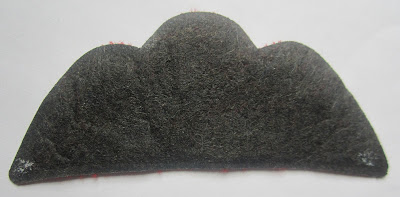 |
| Finsbury War Memorial, Clerkenwell Islington |
Thought I would post some pictures of the War Memorial in Clerkenwell . It is known as the Finsbury War Memorial. The reason for this is Clerkenwell from 1900 to 1965 was part of the Metropolitan Borough of Finsbury which then became part of the London Borough of Islington. It is located in Spa Green Gardens see map below:
The War Memorial is in memory of those who died in the Great war of 1914-1918 who came from the Borough of Finsbury. The Memorial consists of a plinth with a winged figure of Victory, the Roman goddess, holding a laurel wreath. It was designed by Thomas Rudge, who's other work can be seen on top of the Royal Opera House, Covent garden and Claridges, London. It is I think the only War Memorial that remembers all three of the armed forces, the Army, the Navy and the Royal Flying Corps.
 |
| Inscription to those who lost their lives |
The above insciption reads:
Borough of Finsbury
In the name of god the most high
and to enshrine in perpetual
love and reverence the glorious
memory of the men of this
borough who in death made the
supreme sacrifice for their king,
their country, and their kindred
in the Great European War of
1914-1918
This monument is erected
by grateful fellow citizens in
whose hearts the record of their
comrades hardships and achieve-
ments in the cause of international
humanity freedom and justice
will remain for ever ineffaceable
and imperishable
On the first side of the Memorial is the memorial to the the Royal Flying Corps. Can't be many of these around! On top of the wording which reads: "In memory of those whoe served and died in the Royal Flying Corps 1914-1918" there is a circle with a central propellor blade. This seems to based on the roundels found painted on the planes for identification.
 |
| Royal Flying Corp Memorial |
Below the Royal Flying Corps memorial is a memorial to the Honourable Artillery Company. This shows the "Battlefronts"which are Egypt, Palestine, Italy, France, Belgium, Aden and Syria. The reason for them being on this memorial is probably because they are based in City Road about a twenty minute walk from here, again in the Borough of Finsbury.
 |
| Honourable Artillery Company Memorial |
Just below the Battlefront Honours is a brass plaque which reads "
In memory of those members of the Honourable Artillery
Company who lost their lives in the Second World War 1939 - 1945"
 |
| Memorial of the Nava attack on Zeebrugge |
On the other side of the memorial is that to the Navy as seen in the above photo. It reads:
These are they
that went down
to the sea in ships
and did business
in the great waters
they have seen
the works of the Lord
and his wonders
upon the deep
and have reached
there desired haven
T
 |
| Naval attack on Zeebrugge |
The memorial is for the Raid on Zeebrugge which took part on 23rd April 1918. It was a plan to naturalise the key Belgium ports which at the time were being used by the German Navy as a base for submarines and light shipping. The idea was to send older ships fall of concrete into the harbour and scuttle them. However this did not happen and some 500 casualties were incurred at the end of the action, 200 of which were fatalities. The british anounced the raid as a succese, but the German controlled ports were fully operational a few days later. A total of 9 Victoria Crosses were awarded for that one night of action.
 |
| 11th london regiment, Finsbury Rifles attack Gaza |
Last but not least is the memorial to the 11th London Regiment (Finsbury Rifles). They took part in the Palestine campaigns during the Great War as part of the Egyptian Expeditionary Force The above shows the Finsbury Rifles attacking Gaza on Tuesday 17th april 1917. This date is the start of the Second Battle of Gaza. The action was to attack a coastel strong point situated at the edge of sand dunes 2 miles in land. The image shows the Finsbury Rifles climbing up the ridge southeast of the town (seen in the middle right of the image) under heavy bombardment. Interestingly in the top right corner it shows a bi-plane. These were used for ariel bombardment. The effort proved a failure as the Turkish were well prepared and outnumbered the Egyptian Expeditionary Force. Approximatly 6000 casualties were accounted for.
Below show the Battlefront of the Finsbury Rifles which were Gallipoli, Egypt, Palestine, Syria, France and Belgium.
 |
| 11th London Regiment, Finsbury Rifles Battlefront |
















































